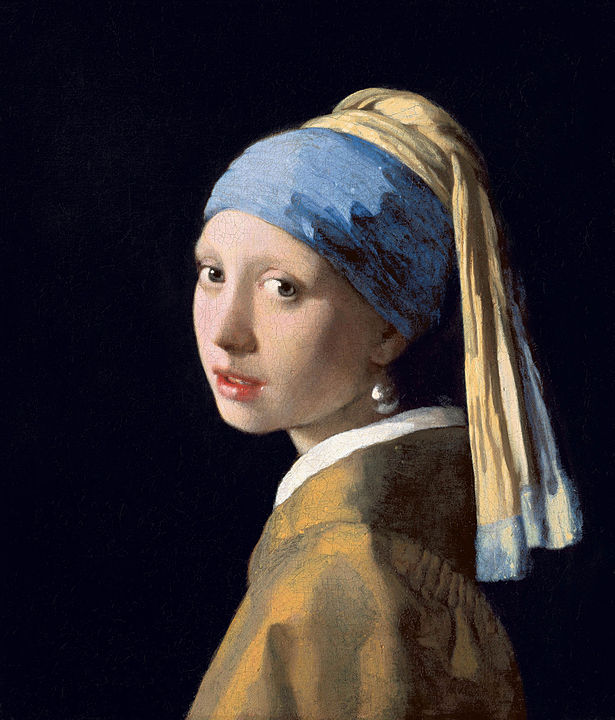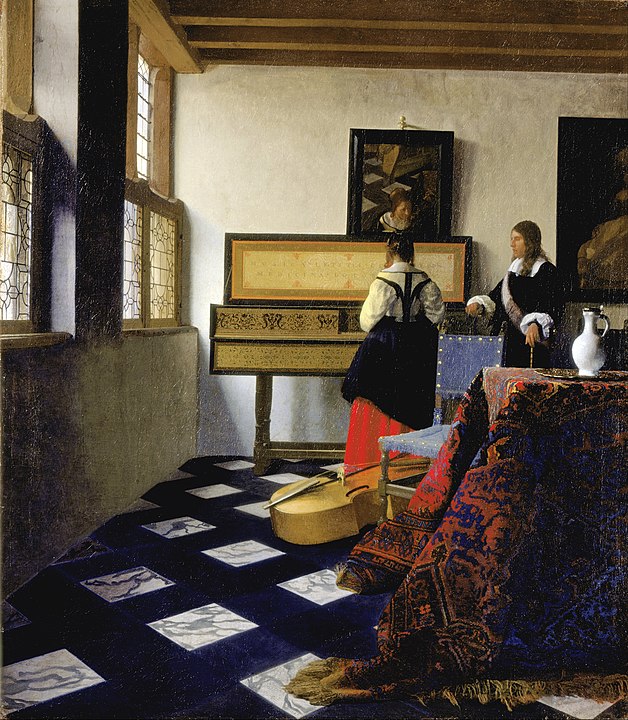The controversy around Tim’s Vermeer is missing the point
I just learnt about Tim’s Vermeer, a documentary by Penn and Teller about inventor Tim Jenison’s attempt to reproduce a Vermeer using technology advanced for Vermeer’s time. The premise sounded interesting, so I looked up the film online, and became even more interested when I learnt about the controversy the film had generated. I still haven’t watched the film, as I’ve found digging into the controversy and what it implies to be fascinating.
If you’re like me and don’t know much about art, here’s some background context: Johannes Vermeer was a Dutch painter who lived from 1632-1675. He’s now acknowledged to be one of the greatest painters of his time, particularly for his realistic paintings and usage of light. [1] Some famous paintings include [2]:


A while back, David Hockney and Philip Steadman suggested that Vermeer and other artists could have used lenses and mirrors to achieve the realism in their paintings. The controversy generated had people doubting both the people hypothesising and the process hypothesised:
Leading art historians were unpersuaded. Hockney, people said, was just jealous because he lacks the old masters’ skills.
As the nay-saying historian James Elkins (of the School of the Art Institute of Chicago) observed in 2001, “the optical procedures posited in Hockney’s book are all radically undertested,” and “no one, including myself, knows what it is really like to get inside a camera obscura”—a lens projecting a perfect image of one side of a room onto a surface equidistant on the other side—“and make a painting.”
This is where Tim Jenison comes in. He believed in Steadman and Hockney’s ideas, and decided to re-create the process to test the ideas. The documentary Tim’s Vermeer follows him through his trial and error of reproducing the music lesson painting above, which included a real life reproduction of the room shown in the original painting. As a NYT review puts it:
During the 130 days he spent painting (following the 213 days needed to build the tableau), Mr. Jenison encountered several unexpected obstacles, whether the discovery that his camera obscura did not produce images that were bright or clear enough for him to paint (this was solved by adding a curved mirror to the setup), or the tediousness of his painstaking task.
You can judge for yourself whether he succeeded or not [3]. The reactions from some critics are particularly fascinating in showing how offended they were.
It’s like the horror film The Fly. The technology Jenison relies on can replicate art, but it does so synthetically, with no understanding of art’s inner life. The “Vermeer” it spits out is a stillborn simulacrum.
So what does it lack? The film implies anyone can make a beautiful work of art with the right application of science. There is no need for mystical ideas like genius.
Tim’s Vermeer is the equivalent of someone hanging a painting-by-numbers version of a masterpiece over the mantelpiece and claiming it’s as good as the real thing. At last, an art film for philistines.
for all his efforts to recreate Vermeer’s methods — he studies light, grinds his own pigments, builds a detailed set — he seems completely uninterested in Vermeer’s art. That he doesn’t see there’s a difference makes him a harder-working, better-bankrolled version of the clichéd gallerygoer who looks at a Pollock and sees a finger painting instead of a revolution.
From an art history news site:
And because so few people can paint in the traditional way these days we try and fool ourselves that in fact not even great artists like Vermeer could do it either, and that he was just cheating. It makes us, and it makes modern artists, feel better to think that
The film was full of contradictions and historical errors from the very start
And someone even thought the moview was an intentional hoax:
It seems there are two separate objections here, one to the idea and one to the process.
Critics of the idea think the notion that artistic genius could be ‘reduced’ to technological innovation and hard work is reductive and blasphemous.
Critics of the process think that the facts imply other ways the paintings were created [4].
Critics of the idea seem to be outraged at a claim that nobody is actually making, that Vermeer must have used this technique, and that by implication Vermeer was less of a genius.
That’s not the point of the movie. The point is that Vermeer could have used this technique, and even if he did, it doesn’t change how you should view his art.
It’s strange that the potential use of ‘technology’ so horrified critics. If we withheld the use of technology from art, then shouldn’t any artwork using modern paintbrushes, paints, techniques etc be considered diminished as a result? Despite what Picasso is rumoured to have said about cave paintings [5], I am sure that people appreciate art having evolved and techniques getting better since then.
Neither Penn and Teller nor Tim himself are claiming anything else:
“We at no point ever say, ‘Tim Jenison discovered how Vermeer painted his paintings,’” [Penn] said. “And,” he added, “I’m not saying that we let the audience decide for themselves. That’s always a lie. We present it exactly the way Tim presented it to me. Which is, ‘Huh, this kind of looks like it might work.’ ”
Mr. Jenison did not insist that the painting he created in the film had to be regarded as a work of art. “Vermeer created the art,” he said. “The best I could do was come up with something that looked the same. Why do you need another ‘Music Lesson’? It was just to see how close I could get.”
This completely rebuts the Guardian and 2014 NYT review’s arguments about the movie intending to ‘claim the painting is as good’ or them ‘not seeing the difference’. The fact that the main points for both reviews are ‘this was a pale imitation without soul and not true art’ rather than ‘hey this seems like a plausible, interesting way to have done it’ shows the reviewers to be more close-minded than what they’re accusing the movie of.
I also agree with Teller’s thoughts that supposing Vermeer used this method, it makes him a better artist:
Art is an activity in which one human heart communicates to the other human heart. If Vermeer used this method, which Tim believes pretty strongly he may have used, that makes Vermeer better, not worse. What this means is that Vermeer was not only someone with wonderful and beautiful ideas, and someone capable of miraculous compositions, but that he was willing to put in the incredibly intense work to translate those ideas to paint on canvas
Taking its theory seriously doesn’t mean that Vermeer was any less talented, or that his work should mean any less. It just means that, as art historians, we have to be willing to abolish the idea of “genius” and look at the wide range of artistic practices that exist across the world and throughout history.
I have more appreciation for critics of the process. Not knowing art well, I can’t judge whether the criticisms are valid, but if they are, they seem to debunk the Hockney and Steadman theories above [4]. This is a fairer take on the movie, focusing on ‘in light of these other facts, it’s more likely Vermeer did this’ rather than ‘tech isn’t art’.
Whether Vermeer really used Tim’s process is not the point; it is the possibility that Vermeer could have used Tim’s process. Critics that do not consider this and instead attack the ‘artfulness’ of Tim’s work seem to have an irrational fear of the explainable. Not all good art may be analysed, but trying to do so is something we should encourage, not discourage. [6]
For another in-depth article on this, check out this link
If you like this, you might like my article on understanding Picasso
Footnotes
- See also “What makes Vermeer a great artist? Some would say that Vermeer’s use of color sets him apart, that his unabashed use of expensive and natural pigments resulted in rich expressions of everyday life, more beautiful and perfect than the thing itself. Some say that it was his innate capacity to achieve uncanny realism without any formal training, whatsoever. Others will argue that his poetic use of light and shadow to highlight certain compositional elements makes him unique.”
- Attribution for the photos: By Johannes Vermeer - Copied from Mauritshuis website, resampled and uploaded by Crisco 1492 (talk · contribs), October 2014, Public Domain, and By Johannes Vermeer - CwFxCw3kUr-Lrw at Google Cultural Institute maximum zoom level, Public Domain,
- This link has Tim’s version on the left and Vermeer’s version on the right, taken from this site
- The art history news site has a comment saying the use of underpainting and glaze are among other signs that Hockney and Steadman’s theories are wrong. It also directs to a Nat Gallery article on Vermeer’s painting techniques that backs up the comment
- Claiming that ‘we have invented nothing’ after viewing them, though this paper implies the quotes may have been invented.
- Having little knowledge about art, I’m bound to get flamed by someone with more experience for this article, but I stand by my points as of what I know currently.